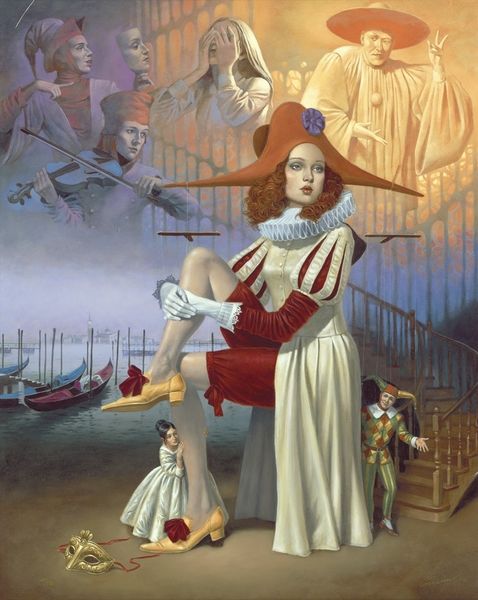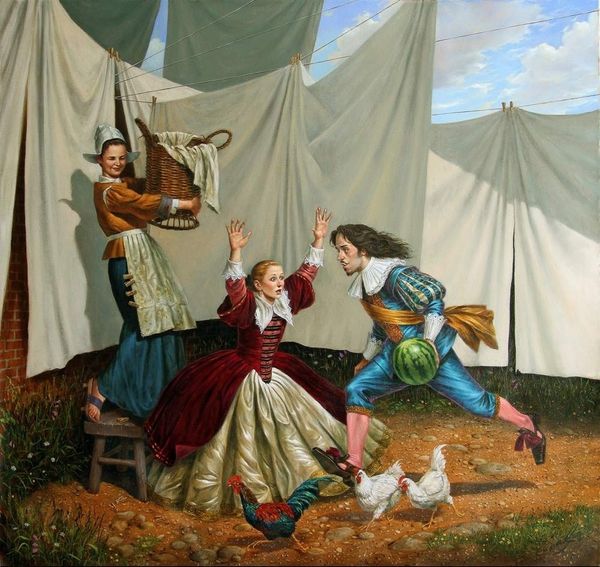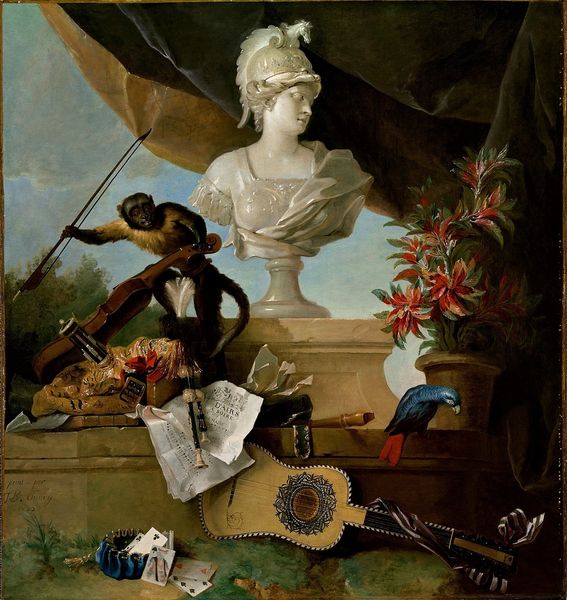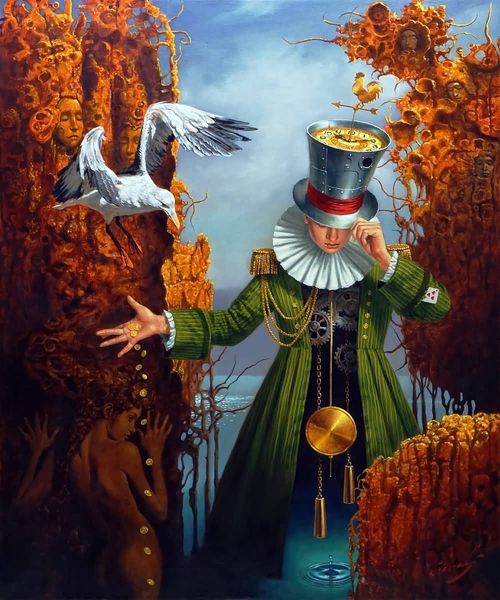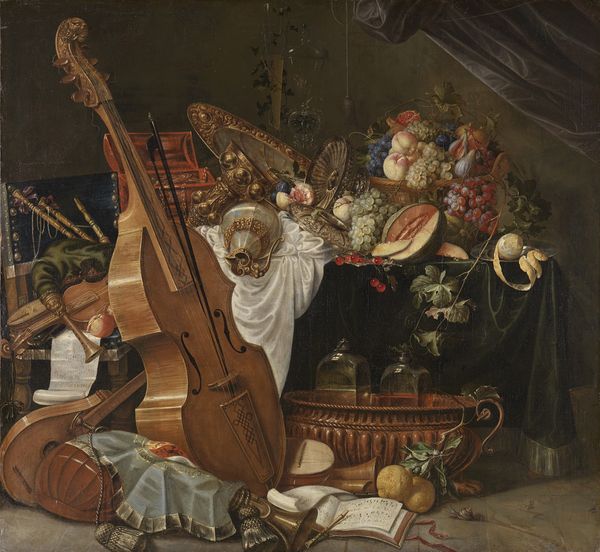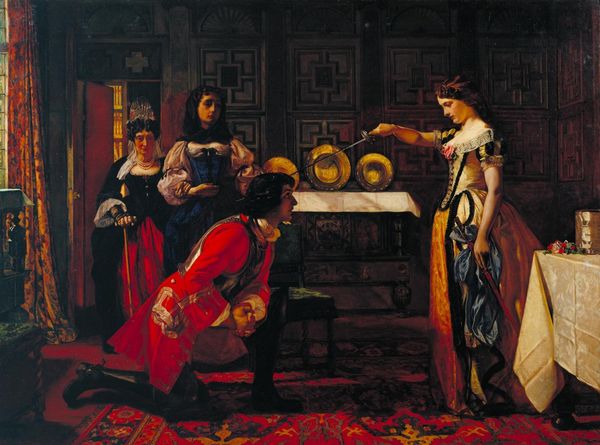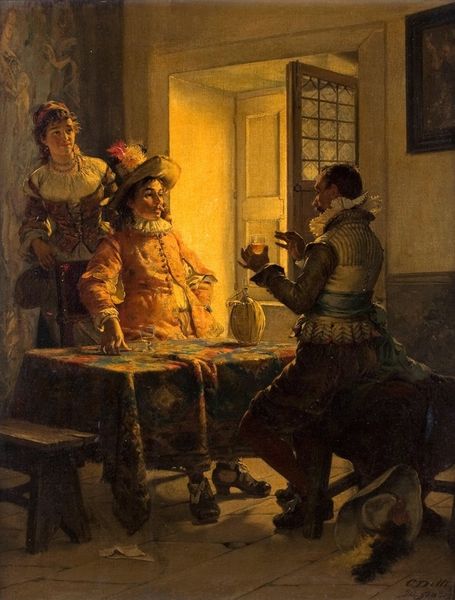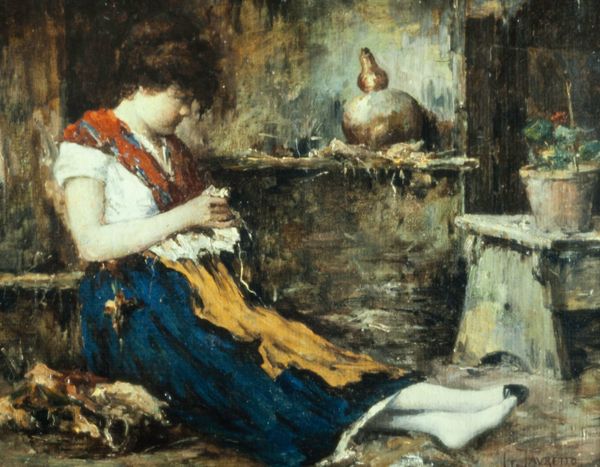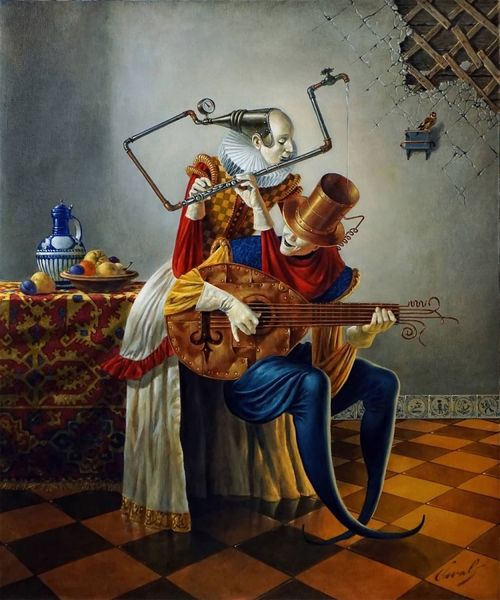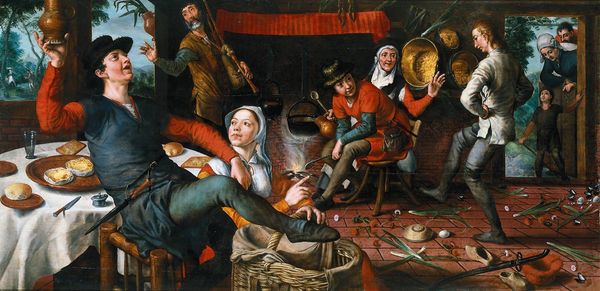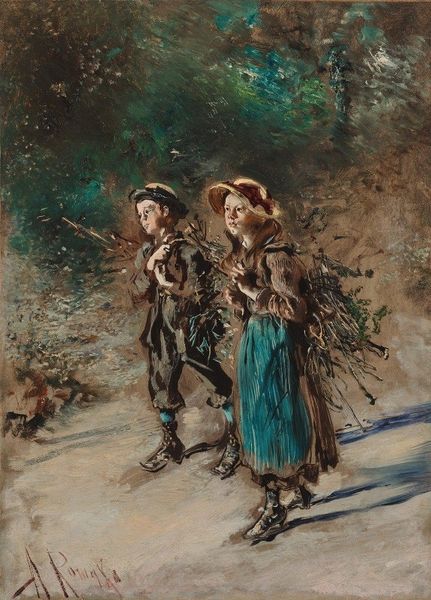
oil-paint
#
portrait
#
oil-paint
#
figuration
#
oil painting
#
genre-painting
#
surrealist
#
surrealism
#
portrait art
#
realism
Copyright: Modern Artists: Artvee
Curator: Today, we’re observing “Final Cut,” a thought-provoking oil painting by Michael Cheval. Editor: The immediate impression is wonderfully bizarre, unsettling. It feels like stepping into a dream, or maybe a theatrical scene. Curator: Cheval’s work blends realism with surrealism, creating what he terms "Absurdist Art". What's fascinating is his playful engagement with historical portraiture conventions. He almost seems to be turning them on their head. The setting looks like a domestic interior leading into an enchanted forest – it’s all quite ambiguous. Editor: Ambiguity is right. Note the three figures and how their tools suggest very different craft forms being explored. The elderly woman saws away at a violin with gardening shears, for example. Look at how the younger woman toys with this strange living rope and plant, the child's shoes beside it, creating an intriguing contrast. Curator: Right. I mean, consider the staging; the violin playing in this context evokes traditional gender roles and domestic harmony of the 17th and 18th century portraiture. By adding shears, it gives us the opposite idea. The shears become an active, interventionist device against tradition. Editor: I see what you're getting at. And it all seems carefully planned through oil paints with realistic depictions to make these juxtapositions pop out. The materiality is as important as its narrative and concept. It feels carefully constructed to confront societal norms. Curator: Exactly! Cheval often inserts elements of irony and dark humour to engage his audience with intellectual narratives. This picture appears like a still life. This genre experienced a resurgence of popularity with the rise of capitalism as artists and wealthy merchants reveled in luxury items, so it challenges that era and all eras since. Editor: I’m struck, too, by how the painting evokes themes of production – we see a broken pot on the table, perhaps even of destruction given the nature of shears on everything. Even the tools can easily symbolize cutting something off as an act. The colors even help create a somber environment; yellows, golds, blues all mixed to make everything a bit dreary to support its themes. Curator: "Final Cut," indeed. It highlights that perpetual conflict in both private and public life: tradition versus iconoclasm, constraint versus innovation. A tug of war in oil on canvas. Editor: Yes, exactly. It certainly leaves one with much to consider about material means and socio-political constructions, especially regarding expectations around skill. It makes one rethink norms around materials that go into these skill expressions and challenges hierarchies around it.
Comments
No comments
Be the first to comment and join the conversation on the ultimate creative platform.
